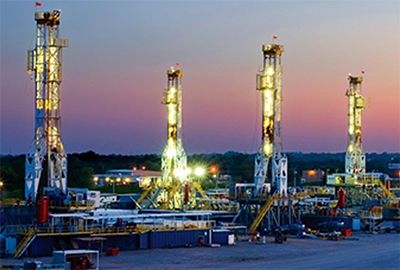Sign up for daily news updates from CleanTechnica on email. Or follow us on Google News!
Just a few short years ago, the idea of manufacturing EV batteries in the US was fraught with hurdles, with one key issue being the absence of a domestic lithium pipeline. The supply chain is still problematic to the extent that it involves digging new surface mines, but an alternative solution has been emerging in the form of geothermal brine, and the US Department of Energy is pulling out all the stops to promote it.
Where Is All The Domestic Lithium For The EV Batteries?
Long before the advent of lithium-ion EV batteries, the US earned a reputation as the biggest producer of lithium in the world, as well as the biggest user of lithium in the world. By the mid-20th century lithium was a common input for the metallurgy, pharmaceutical and ceramics industries among others. Most famously, lithium was also among the original ingredients in 7-Up.
The 7-Up angle dried up by 1948 after concerns over health impacts surfaced, but the use cases for lithium kept expanding into new industries throughout the 20th century, leading to the growth spurt for EV batteries in the 21st century.
In an epic case of bad timing, lithium mining activity in the US has dwindled down to just one operation by the time the EV market took off, that being the 1960s-era Silver Peak mine in Nevada.
Like the rest of the world, the US has been depending on lithium from just a few countries for its EV batteries. Australia and Chile dominate the market, with China and Argentina also in the running.
It’s not like the US doesn’t have its own copious lithium reserves. It does. In 2020 the US Geological Survey identified five states with major deposits: Arkansas, California, Nevada, North Carolina, and Utah. A massive discovery in Maine also occurred in 2021, after the report was published.
USGS also noted that smaller deposits occur in Arizona, Colorado, New England, New Mexico, South Dakota, and Wyoming.
More Sustainable Lithium For EV Batteries
The problem is convincing local residents and environmental organizations that large swaths of the countryside should be torn up for the sake of EV batteries.
In Nevada, for example, the Summit Lake Paiute Tribe, Reno-Sparks Indian Colony, and Burns Paiute Tribe have taken the construction of a new lithium mine for EV batteries to court over its location at a sacred site. Opposition is also forming against a proposed lithium mine in North Carolina, and the recently discovered lithium deposit in Maine is also facing hurdles.
These mines may or may not ever happen, but in case they do not, the US Department of Energy has been preparing to go to Plan B. The Department of Energy has been supporting the development of a geothermal brine supply chain for lithium-ion EV batteries, deploying a technology called Direct Lithium Extraction.
The basic idea behind DLE is to pump geothermal brine to the surface, extract the lithium with particles of adsorbent material, and then send the spent brine back underground. The operation involves far less surface disruption than conventional mining. It also eliminates the use of vast open-air lagoons used in conventional lithium brine extraction.
There being no such thing as a free lunch, DLE technology is not as simple as it may seem. The basic technology was invented in the 1980s and marketed in the 1990s, but scaling it into a commercially viable operation has involved years of effort.
All that hard work is beginning to pay off, though. Controlled Thermal Resources, Lilac Solutions, and EnergyX are among the DLE startups to cross the CleanTechnica radar in recent years. EnergyX is also introducing solid-state EV batteries to go along with its lithium supply operation.
The Geothermal Brine Bonanza
The Salton Sea in California has been one key focus of DLE activity in the US, and now the Department of Energy has put some hard numbers on the lithium resources at hand in the area.
On Tuesday, the Department of Energy released the results of an analysis of Salton Sea lithium resources conducted by its Lawrence Berkeley National Laboratory. The lab found that new DLE technology could lead to the production of more than 3,400 kilotons of lithium, or enough to manufacture more than 375 million EV batteries.
The Salton Sea also happens to be the location of 11 geothermal power plants, and the Department of Energy is among those spotting an opportunity to piggyback DLE operations onto geothermal facilities. The figure of 3,400 kilotons is based on the potential for expanding geothermal resources in the Salton Sea region.
There is plenty of room for that. The existing geothermal power plants account for about 400 megawatts of capacity, and the Department of Energy estimates that the region possesses a potential capacity of 2,950 megawatts.
“Geothermal brines, which are a byproduct of geothermal electricity generation, often have high concentrations of minerals like lithium and zinc,” the Department of Energy explains. “While exact concentrations of these minerals depend on the location and surrounding geology, the use of direct lithium extraction (DLE) from geothermal brines offers a promising opportunity to couple clean, renewable electricity with a source of domestic lithium.”
Lithium EV Batteries Make New Friends In The Fossil Energy Industry
The Berkeley Lab analysis also laid the groundwork for local participation and environmental assessments, which will be put to the test as new DLE projects hit the ground in the Salton Sea region and elsewhere.
The DLE field has even attracted the notice of ExxonMobil. The company gained notoriety for failing to pursue renewable energy opportunities in the early 2000s, except for a long-running algae biofuel research project that it ultimately dropped. Now it seeks to become a leading supplier of lithium for EV batteries, beginning with a DLE project in Arkansas.
The DLE startup Standard Lithium has already been cranking up operations in Arkansas, so ExxonMobil has some catching up to do. Nevertheless, it seems determined.
“By 2030, ExxonMobil aims to be producing enough lithium to supply the manufacturing needs of well over a million EVs per year,” the company has stated.
That’s all well and good, though the International Energy Agency has noted that global automakers poured 10 million new EVs into the market last year alone, with another 14 million expected in 2023 and many more beyond that. That’s a lot of EV batteries, and there’s plenty more where that came from. According to the IEA, EVs will account for 18% of global car sales by the end of 2023. The agency also predicts that EVs will snare 60% of the market by 2030.
In that context, ExxonMobil’s foray into DLE appears to be little more than a goodwill gesture, but only time will tell.
Follow me @tinamcasey on Bluesky, Threads, Post, and LinkedIn.
Image: “Mudpots bubble and steam near the Salton Buttes lava domes, a volcanic area at the southeastern end of the Salton Sea, California” (credit Deborah Bergfeld, USGS).
Have a tip for CleanTechnica? Want to advertise? Want to suggest a guest for our CleanTech Talk podcast? Contact us here.
CleanTechnica Holiday Wish Book
Our Latest EVObsession Video
I don’t like paywalls. You don’t like paywalls. Who likes paywalls? Here at CleanTechnica, we implemented a limited paywall for a while, but it always felt wrong — and it was always tough to decide what we should put behind there. In theory, your most exclusive and best content goes behind a paywall. But then fewer people read it!! So, we’ve decided to completely nix paywalls here at CleanTechnica. But…
Thank you!
CleanTechnica uses affiliate links. See our policy here.





